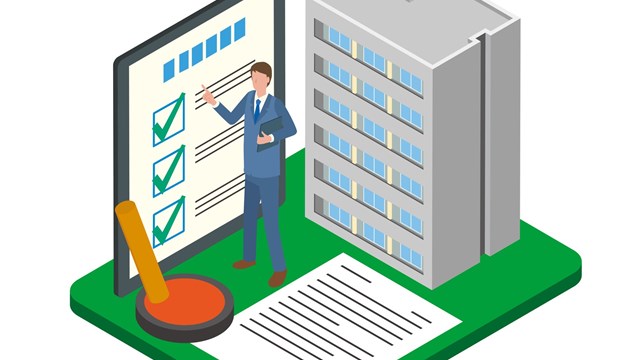Inflation has hit the insurance building insurance industry in a big way. And according to a recent survey conducted by the Foundation for Community Association Research (FCAR), skyrocketing premiums are putting serious financial pressure on condo and homeowners associations nationwide.
According to the FCAR, which collected nearly 900 responses from community association leaders including board members, managers, and management company executives representing around 10,000 community associations, as well as insurance and risk management professionals, “More than 90% of respondents reported that their property and casualty insurance premium had increased at the last or current renewal, with 24% citing an increase between $101 and $500, and 14% citing a larger increase.”
The question is, Why? Unlike the produce department at your local supermarket, building insurance premiums aren’t subject to supply chain issues or crop failure. With premiums rising in some cases by as much as forty percent, the increases warrant a raised eyebrow and a bit of investigation.
What’s Behind the Spike?
According to industry watchers, the root of the problem lies with the reinsurance market. Reinsurance is a reimbursement system that protects insurers from very high claims. It usually involves a third party paying part of an insurance company's claims once they pass a certain amount. Reinsurance is a way to stabilize an insurance market and make coverage more available and affordable.
“Reinsurance treaties were finalized between reinsurance carriers and insurance companies on January 1, 2023,” says Todd Ross, managing director of One Point Brokerage, a Manhattan-based brokerage. “That’s when premiums started to increase. Carriers are raising their minimum replacement cost valuation used in the calculation when arriving at a value to insure buildings, thus driving property premiums up.”
There are other underlying factors at play as well, including the continued and persistent inflationary environment, escalating claims costs, record natural disaster losses, and skyrocketing capital costs. It all creates a perfect storm, impacting premiums.
Valuation
One of the main culprits in the calculation process from which premiums are derived is total insurable value. Total insurable value (TIV), explains Ross, is the value of property, inventory, equipment, and business income covered in an insurance policy. The building value is determined by its replacement cost, which is the amount of money required to replace the asset with a similar one in the event of loss or damage. You take the total square footage of the building, multiply it by the replacement cost factor on a per-square-foot basis, and you get the building insurance replacement cost factor. Add in any business income, and business or personal property, and you arrive at the building’s TIV. (It should be noted that the replacement cost value is not a certified appraisal of the building, it simply is a starting point in the underwriting process.)
“Once a carrier has a replacement cost value for the building,” says Ross, “and thinks it’s representative of current conditions and meets the minimum property valuation requirements imposed on them by their reinsurance carriers, the insurance carrier can underwrite a building and arrive at a property insurance premium.”
How Can Co-ops & Condos Cope?
Ross says that co-op and condo communities can take steps to soften the blow of higher costs, but aren’t likely to reverse it. “They can seek another carrier that may not be raising valuations, or one who agrees the current property valuation is adequate for replacement cost purposes,” he says. “Another approach, if replacement cost has risen significantly in the past year or two, is to make a case to the insurance carrier that the current replacement cost is fair and adequate and has been increased recently.” Neither may result in a positive outcome.
In the short term, there may not be many things a board can do if the insurance carrier wants to increase the value. “However,” points out Ross, “asking the carrier to increase the value in a two-step process - say 50% of the increase this year and the balance in the following year - is a reasonable request that some carriers are willing to consider. We counsel our clients to raise the replacement cost value of their building every year by three to five percent, so that over the years the value of the building goes up slowly and steadily for the long term, instead of suddenly and dramatically. Instead of getting hit with a one-time increase of 30 or 40 percent, any potential increase in value an insurance carrier may want is muted.”
Unfortunately, these jumps in premiums are likely to continue. Like all industries, the insurance industry has adopted new technologies designed to improve profitability. The adoption of and use of advanced analytics, technology, and increasing amounts of data, have led insurance companies to adjust their pricing models in trying to find what the “proper” cost of risk is in an ever-changing and unpredictable world. To say the historically staid, slow changing insurance industry is in a period of transition is an understatement.










Leave a Comment